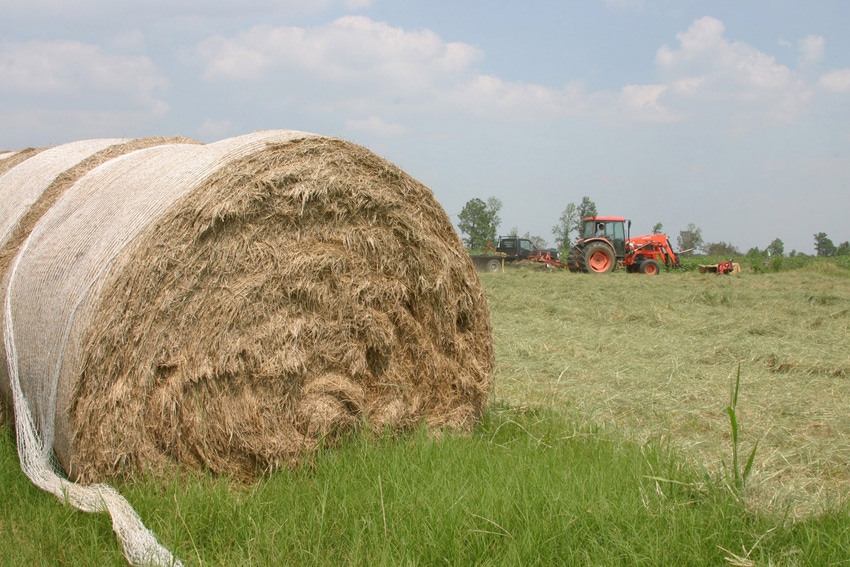November 21, 2013

Results from the annual Southeast Hay Contest show just how tough 2013 was for Southern hay producers who faced a season drenched with rainy problems early and widespread disease and insect damage later.
The SEHC is put on by Auburn University, Clemson University, The University of Florida and The University of Georgia.
The 2013 results are broken down into the six categories: warm-season perennial grass hay (bermudagrass, bahiagrass), perennial peanut and alfalfa hay, perennial cool-season grass (tall fescue, orchardgrass), mixed and annual grass hay, grass baleage and legume baleage.
Weather is always a major limiting factor when attempting to produce high quality forage. In the past seven years, drought has been the major limitation. This year, however, near daily rainfall across the region during the first several months of the growing season greatly limited producer’s ability to get into their hayfields.
Check live cattle futures prices now
Widespread challenges with disease and insect damage in the later part of the season further reduced quality and quantity. These challenges resulted in a dramatic reduction in the number of entries from the usual quality hay producers. There were only 109 entries to the contest this year, a 30 percent decrease from last year
Weather challenges a drag
Weather challenges placed a drag on the average quality of the samples. The average relative forage quality, or RFQ, value in each category was down from 2012.
But winning producers found a way to make high quality hay despite the weather. The winning RFQ values for each category were on par with or greater than the winning RFQ values for previous years, with the exception of the alfalfa and perennial peanut category. This year’s weather challenges really highlight that good management can make a difference over the long run.
More from Southeast Farm Press
China making cotton market nervous
Double-crop wheat, soybeans good choice for second year running in Southeast
Growers should budget for FY14FSA program payment reductions
Farmland values down, income up for third quarter 2013
In the past, hay quality prediction equations were based on the fiber concentration of the hay crop. However, forage crops can have similar fiber content yet have very different digestibility. For instance, Tifton 85 bermudagrass often has a higher fiber concentration than other bermudagrass varieties, yet it is more digestible.
This improved digestibility results in enhanced animal performance, but is not reflected using traditional forage testing methods.
The RFQ index was developed by the University of Florida and the University of Wisconsin to predict the fiber digestibility and animal intake of harvested crops. Since 2003, hundreds of warm-season samples have been used to refine the RFQ equation for bermudagrass and other warm season forages. Currently, all forage sample results from the UGA Feed and Forage Testing Lab in Athens contain an estimate of RFQ.
RFQ helps producers to easily categorize and price hay lots based on relative quality. Producers can purchase hay lots depending on its end use. For example, there is little need to feed high-quality hay to livestock that could easily utilize poorer quality forage.
Hay with a RFQ of 115-130 can be fed to maintain beef cow-calf pairs, hay with an RFQ of 125-150 is adequate for stocker cattle or young growing replacement heifers, and hay with an RFQ of 140-160 is suitable for dairy cattle in the first three months of lactation.
You May Also Like




